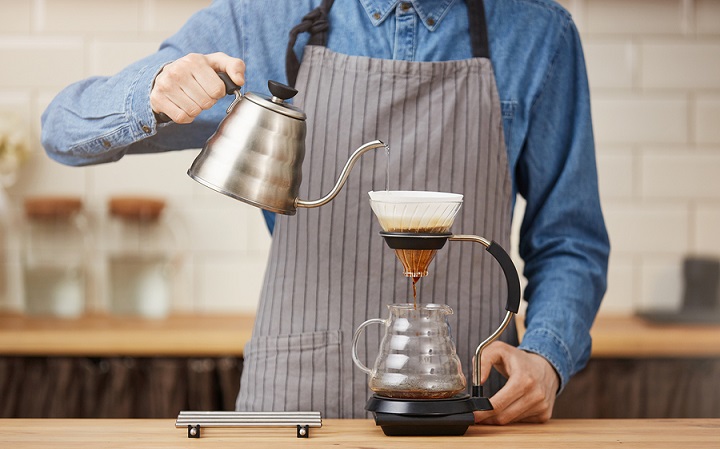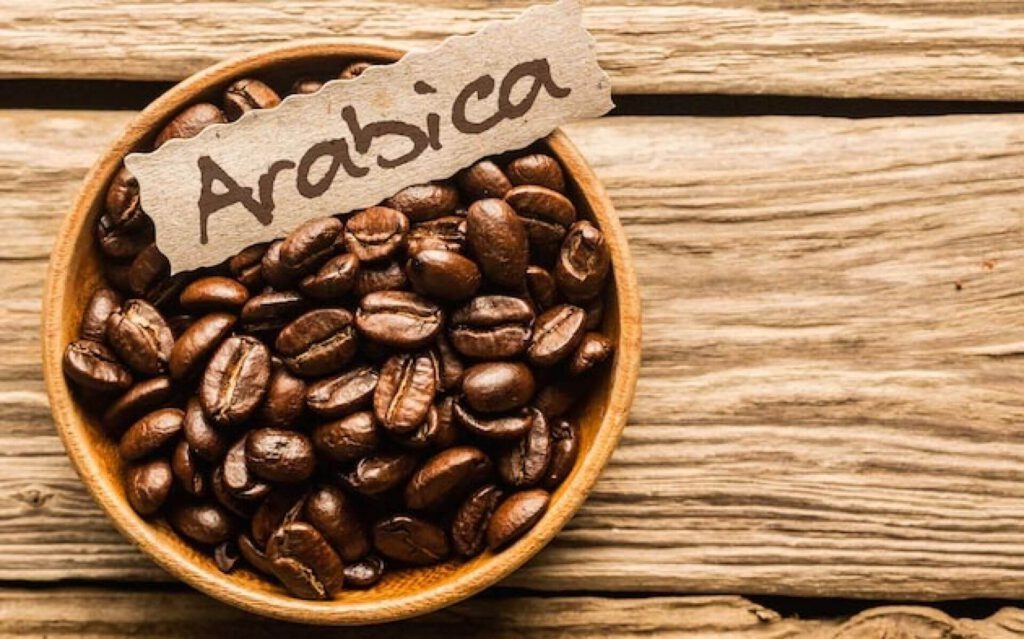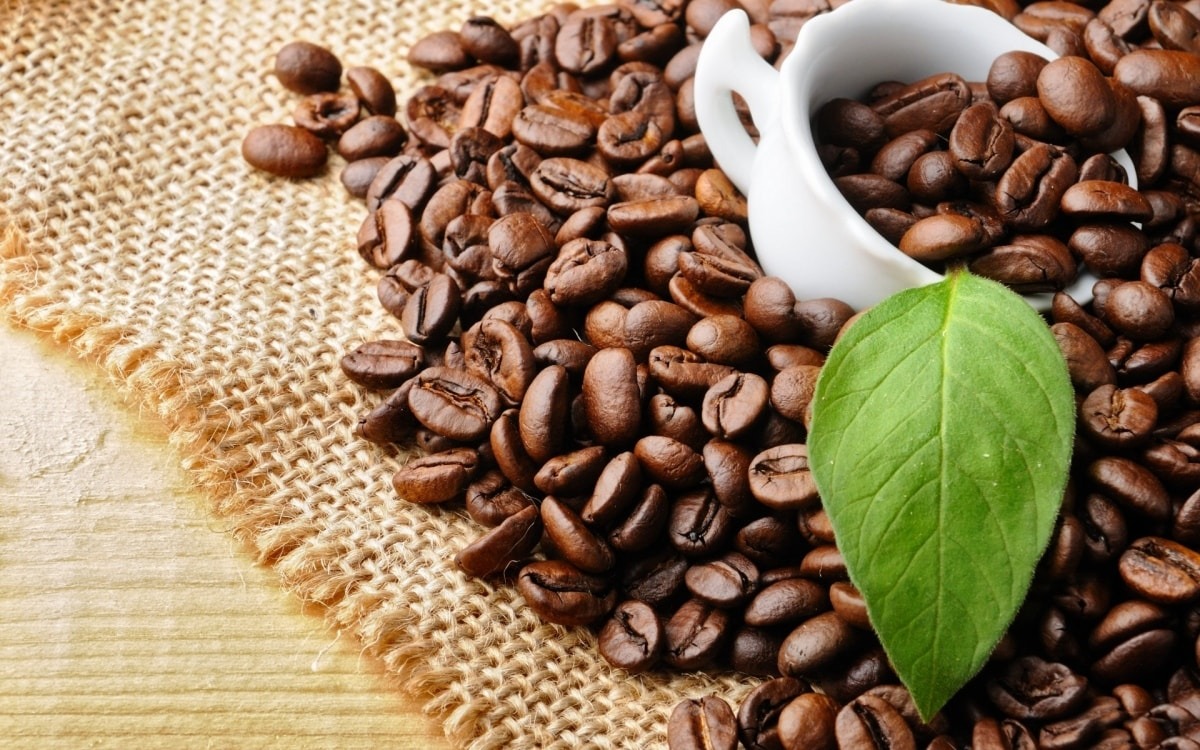Brewing Pour Over craft coffee with the basics from PART 1, we learned about what Pour Over is, and the tools needed to prepare this Pour Over method. So this Part 2, we will learn more about roast level, grind level, Coffee : Water ratio, and the techniques to know in this brewing method of crafting coffee.
1. What kind of coffee should you use in crafting coffee?
After preparing the equipment, the next step will be “What kind of coffee should you use in pouring over”. There are several factors you consider when choosing seeds:
1.1. Roast profile
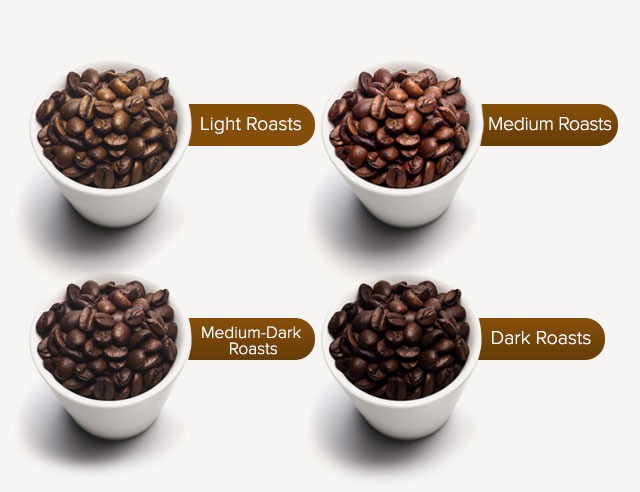
Roast levels
The Pour Over method is used to highlight the characteristics, aroma and flavor properties of the beans, so you should choose the level of Light Roast. Roasted beans with a light roast level also help to remove the most acidity, highlighting the taste-note of the coffee.
Of course, you can use it at medium or dark roast if you don’t like the sour taste too much, but peeling and feeling the flavor will be more difficult.
1.2. Grind size
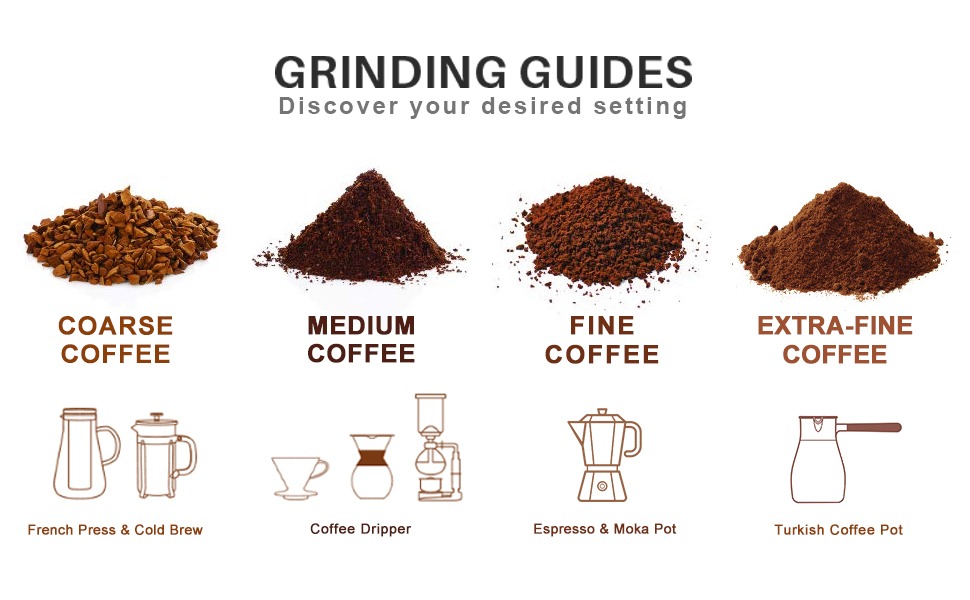
Grinding levels for different coffee making methods
The size of the coffee powder affects the extraction rate. Pour over is a percolation method – that is, coffee and water are in contact for a shorter time than immersion, but longer than espresso. So if you want the coffee to have enough contact surface for extraction before the water passes through the filter but not too much it will lead to a low extraction rate which makes the coffee bitter. This means that you should start with Medium Size and start adjusting the grind size according to your assessment. If it seems thin and sour, try a finer blend. If the crafting coffee has a bitter taste, a lot of pepper and a lack of sweetness, try a little coarser grind.
Invest in a quality coffee grinder so that the coffee powder when ground will produce the same size of coffee powder. Inexpensive grinders will produce coffee powder of different sizes, making it very difficult for you to adjust the quality of coffee as you want. The tiny powders of coffee make the crafting coffee extraction rate very fast, making your cup of coffee bitter, dark and difficult to drink.
2. Coffee : Water ratio
You may see a lot of different suggested ratios, but 1:16 (1g of coffee and 16g of water) is always a good place to start. First, keep this coffee : water ratio and adjust factors that affect extraction, such as grind size and water temperature, until you find a recipe that works for you.
Then try changing the ratio of coffee to water. If your coffee is too thin, add more ground coffee without changing the other factors and judge if it tastes better. If you find your cup too strong, consider reducing the amount of coffee. But remember to keep track of what you change so you can replicate your perfect proportions when you find it.
3. Which pouring technique is best?

Don’t try to buy a lot of dispensing tools and change them all the time. The first advice is to learn how to control your only brewing device and learn how to control the quality of coffee by watching the blooming process, stirring to achieve the desired extraction. Most baristas control the flow of water by pouring around a concentric circle, which helps to maintain a more steady flow.
Once you get the hang of your barista, it’s time to start breaking the rules; creating recipes based on the basics you’ve learned along the way. formerly.
4. Blooming process
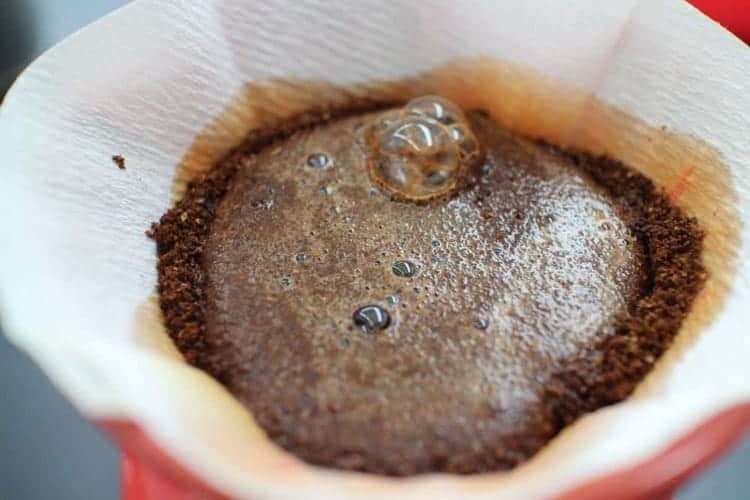
Blooming process
The term Blooming refers to the process when the coffee powder first encounters water and begins to expand; followed by the rising bubbles of CO2 – the gas that appeared in the previous roasting process. The degree of light roast roasting and the newer the crafting coffee; the more CO2 will be released during the blooming process.
So why is Blooming needed? In my opinion, it is often said, “Give the coffee time to breathe!”. The Blooming process will help release CO2 – the “character” that prevents extraction; because CO2 occupies the area of the water and disturbs the gaps between the coffee powder. Therefore, the gas release improves the extraction process greatly.
5. Intermittent or continuous watering?
Intermittent pouring is the technique of pouring water with a specific amount of water for a specific period of time; testing for differences in the amount of water and the number of pours. This technique helps to break the bonds of the coffee powder, causing them to move more, creating more points of contact with the water.
This technique is compared to the continuous pouring technique; where baristas try to pour water at a constant and, of course, continuous flow rate. This helps to keep the flow constant and saturation as much as possible.
You can use pouring technique as another indicator of variation to consider when tweaking your recipe. Different techniques for extraction and therefore have different effects on your brewing method
6. Stir technique
The simple stirring technique is just a slight impact on the coffee powder during the Pour Over process; the slight disturbance of the coffee powder during the process will help the coffee extract better.
Pour Over coffee is always a great way for me to start my day with a cup of coffee that’s not too complicated. By understanding the parameters; the key information is that you are ready to prepare and to adjust so that the coffee cup becomes the best coffee cup ever. good to make a good beer and have the tools to tweak it until it turns into something great.
No matter what craft coffee maker you start with, Coffee World is spinning around you just by “Pour is on hand” ! – https://perfectdailygrind.com/
——————————————————————————————————-
We are here to match your requirement. Do not hesitate to contact us for the best price!
PRINCE COFFEE
ADD: 41/49 Huynh Thuc Khang Street, Dong Da District, HaNoi, VietNam
WEBSITE: http://charmcoffee.top/
EMAIL: sales@fineco.vn
HOTLINE: +84 966420187 (WHATSAPP/VIBER/ZALO)

